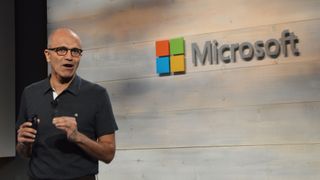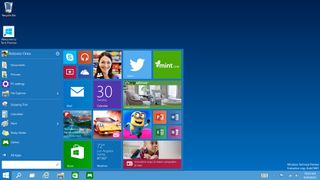Microsoft in 2014: your new 'platforms and productivity' provider
Nadella pins hopes on subscribers

As the clock struck 12 on January 1, 2014, Microsoft still had a soon-to-be-departing Steve Ballmer in charge, we had no idea who was taking over and Windows 10 was still known as Threshold. Since Satya Nadella was named Ballmer's successor on February 4, the firm has been rebranded as a "platforms and productivity" company and undergone a transformation that has seen significant changes at every turn.
Nadella's arrival and reshaping of Microsoft
One of the first decisions that had to be made was who would take over the reins from outgoing CEO Steve Ballmer. After much speculation that the selection committee would go for an external candidate, it was decided that internal was the way to go, and Nadella the man to take the firm forward.
With an $84 million (around £54 million, AU$103 million) pay packet, Nadella has set about shaping the firm by taking the company away from devices and products to focus on services, especially since the introduction of subscriptions for some of its products.
One of Nadella's first moves was an unpopular one as he cut 18,000 jobs across the firm, in what is the biggest jobs purge in company history as 14% of the total workforce were given P45s. Many of these positions were sacrificed at Nokia, specifically in its home territory of Finland, and are geared towards saving the company considerable amounts in the long run.
It didn't get any easier for Nadella later on in the year as he was forced to apologise over comments he made that suggested women should not ask for a pay raise and instead have "faith in the system". It's hard to judge Nadella's first 10 months in the job this early, although his decisiveness in making hard decisions has to be commended.

Windows 10 arrives
One of the key pieces of the puzzle that will make or break Nadella as Microsoft CEO was realised in September when the firm skipped the number nine and unveiled Windows 10 as its next OS.
Microsoft answered the prayers of users everywhere by bringing back a full Start menu as part of the new version of its OS that is already out as a developer preview. Windows 10 will also be on every single Lumia smartphone and link together with its Cortana voice assistant. An early release of Windows 10 is expected in January 2015 and we will find out then if Microsoft plans to offer it as a subscription-based OS to fit in with Nadella's new revenue model.
Are you a pro? Subscribe to our newsletter
Sign up to the TechRadar Pro newsletter to get all the top news, opinion, features and guidance your business needs to succeed!
Subscription becomes the key
One of the biggest success stories of the year was the decision to roll out Office to the iPad, and in hours the product had shot to the top of the App Store charts. Just six weeks after its release, the Office for iPad family had been downloaded 27 million times before a paid subscription option was added in September to reflect the company-wide move to this model.
Since Microsoft began giving away licenses for an increasing number of its products, it's also rumoured that Windows 10 will be offered on a subscription basis with details to be ironed out before January. Subscriptions are a huge part of Nadella's plan to reinvent the firm as one that relies less on revenue from devices or products (licenses) themselves and more on rolling payments for its renowned stable of services.
The end of Windows XP… sort of
April 8, 2014, is a date that will go down in the annals of personal computing as the day Microsoft delivered the death knell to Windows XP by stopping security patches and support. Even though many organisations have moved away from XP, there is still a reluctance to use either Windows 7 or 8 with many waiting for Windows 10 – a situation that could cause a security headache. The UK government even agreed to pay £5.5 million (around $8.6 million, AU$10.6 million) for a year's extension to support for XP, reflecting the continued reluctance to move away from the outdated OS.
Most Popular


